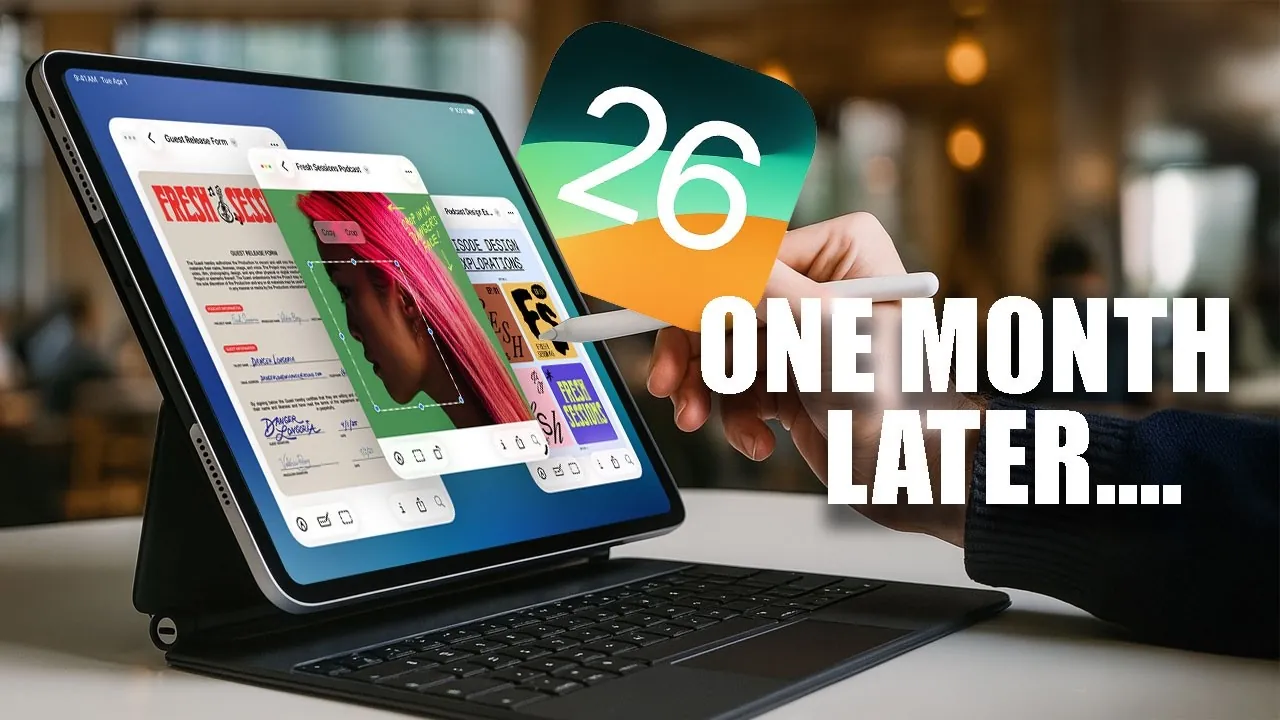
The M4 iPad Pro, in tandem with iPadOS 26, has redefined what an iPad can achieve, offering a harmonious blend of innovative hardware and refined software. This combination positions it as a versatile tool for creators, students, and professionals. However, while it excels in many areas, the device still struggles to fully replace a MacBook due to the absence of comprehensive desktop application support. The video below from HotshotTek gives us more details.
Hardware Advancements: Power Meets Precision
The M4 iPad Pro is powered by the M4 chip, a technological marvel designed to handle demanding tasks with remarkable efficiency. With its 10-core CPU, 10-core GPU, and 16-core Neural Engine, the chip delivers exceptional performance in areas such as AI-driven tasks, image recognition, and natural language processing. The inclusion of ray tracing technology further improves its graphics capabilities, making it a strong choice for gaming, 3D modeling, and other graphics-intensive applications.
The display is another standout feature of the M4 iPad Pro. Its OLED Ultra Retina XDR screen offers unparalleled clarity and vibrancy, boasting 1,000 nits of HDR brightness, a peak of 1,600 nits, and DCI-P3 color accuracy. The 120Hz refresh rate ensures smooth scrolling and responsiveness, which is particularly beneficial for content creators and media consumers. Additionally, the device’s durable build quality and excellent battery health after a year of use highlight its reliability and long-term value.
iPadOS 26: A Leap in Usability
The introduction of iPadOS 26 has significantly enhanced the functionality of the M4 iPad Pro, particularly in terms of multitasking. Features such as floating and overlay windows allow users to manage multiple tasks with greater ease, while Mac-style shortcuts streamline navigation and productivity. These improvements make the device more intuitive and adaptable to a variety of workflows.
The customizable control center adds another layer of flexibility, allowing users to tailor the interface to their specific needs. Meanwhile, the upgraded Spotlight search delivers richer previews and smarter results, making it faster and more efficient to locate files, apps, or information. The freestyle drag-and-drop feature further simplifies workflows by allowing seamless movement of content between apps, enhancing productivity for both casual users and professionals.
User Experience: Bridging the Gap to a Laptop
The M4 iPad Pro, when paired with the Magic Keyboard, offers a near-laptop experience. The keyboard’s premium build, backlit keys, and responsive trackpad make typing and navigation both comfortable and efficient. Combined with iPadOS 26’s multitasking features, the device becomes a powerful tool for productivity, content creation, and editing tasks.
The OLED display plays a crucial role in enhancing the overall user experience. With its improved contrast, reduced ghosting, and superior clarity, the display is particularly appealing to creators who demand high-quality visuals and precision. These features make the M4 iPad Pro a compelling option for those who prioritize portability without compromising on performance.
Limitations: Where It Falls Short
Despite its many strengths, the M4 iPad Pro is not without its limitations. For users upgrading from an M1-powered iPad Pro, the performance gains offered by the M4 chip may feel incremental rather than fantastic. This makes the upgrade less compelling for those who already own a recent model.
The most significant drawback, however, is the lack of support for full desktop applications. This limitation prevents the M4 iPad Pro from fully replacing a MacBook for workflows that rely on professional-grade software. For tasks requiring advanced tools like Final Cut Pro, Logic Pro, or other desktop-exclusive applications, the iPad Pro remains a secondary device rather than a primary workstation.
Who Should Consider the M4 iPad Pro?
The M4 iPad Pro is best suited for users who prioritize portability, versatility, and innovative features. It is an excellent choice for creators, students, and professionals who need a powerful yet compact device. Key benefits include:
- Advanced multitasking capabilities enabled by iPadOS 26.
- A stunning OLED display with exceptional brightness and color accuracy.
- Durable build quality and reliable battery performance.
However, for users whose workflows depend heavily on desktop applications, the iPad Pro’s limitations may prove restrictive. In such cases, a MacBook or similar device may still be the better option.
Final Thoughts
One year after its release, the M4 iPad Pro, combined with iPadOS 26, has firmly established itself as a powerful and versatile tool in Apple’s ecosystem. It excels in areas such as performance, display quality, and multitasking, making it a compelling choice for users seeking a portable yet capable device. However, its inability to fully replace a MacBook due to the lack of desktop application support remains a critical consideration. For those who value portability, innovative technology, and flexibility, the M4 iPad Pro is a strong contender, but its limitations should be carefully evaluated before making a decision.
Discover other guides from our vast content that could be of interest on M4 chip.
- The Apple M4 Chip: Apple’s Secret Weapon for the Future
- Apple M4 Extreme Mac Details Revealed
- Apple M4 MacBook Air: Key Updates You Need to Know
- The New MacBook Air M4: Sky Blue Design , $999
- 2025 iPad Air: New Leaked Details Surface
Source & Image Credit: HotshotTek
Latest Geeky Gadgets Deals
Disclosure: Some of our articles include affiliate links. If you buy something through one of these links, Geeky Gadgets may earn an affiliate commission. Learn about our Disclosure Policy.